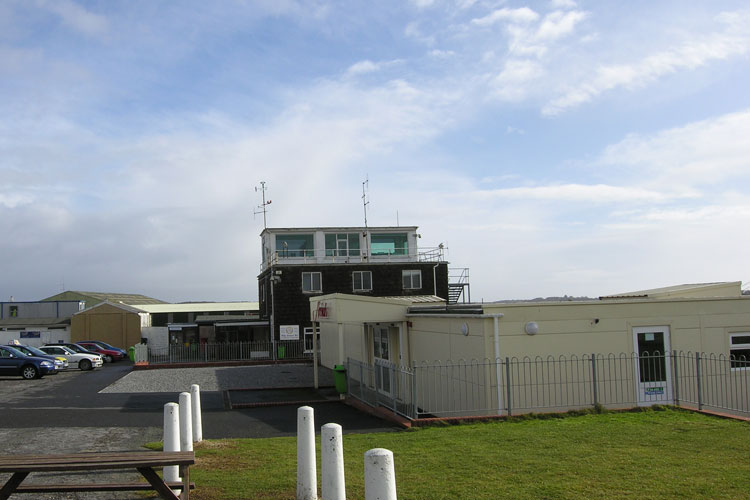Gower
075 Swansea Airport

HLCA075 Swansea Airport
International airport/WWII aerodrome: WWII features; former funerary and ritual sites; and former minor communication routes. Back to Map
Historic Background
The historic landscape area of Swansea Airport equates to the extent of Swansea International Airport, formerly unenclosed common land and part of Fairwood Common.
The sites of Pennard Burch and Bishopston Burch Bronze Age tumuli were destroyed during the 1940s by construction of Fairwood Common aerodrome. Pennard Burch barrow (00239w) was excavated before 1855 by Lady Mary Cole and sherds of a later Bronze Age urn with cord impressions were said to have been recovered. It was then re-excavated in 1941, when the mound was found to be a composite ring structure including the following elements: a central vestigial stone cist which had contained the primary burial; a ring of stones encircling the site of the grave which had an internal diameter of 6.1m; a mound of clay covering this stone ring; a turf mound which had a maximum diameter of 17.1m and was 1.4m high; an outer stone ring encircling the turf mound; a final outer casing of clay, giving the completed barrow a diameter of 22.9m. The Bishopston Burch burial barrow (00240w) was disturbed in nineteenth century, and then damaged and subsequently excavated in 1941. The barrow consisted of: a central burial pit 1.8m long by 1.5m wide with depth of 0.6m containing an inverted collared urn with the cremated bones of a child and charcoal; a cairn of stones 12.2m in diameter with evidence of secondary burials; a round mound of clay and turf sealing the cairn, giving a total diameter of 30.5m. In addition, three hearths were found on or near the edge of the cairn, one of which yielded a sherd of Romano-British cooking vessel.
RAF Fairwood Common, now Swansea Airport, was opened under No. 10 Group Fighter Command on 15th June 1941. The airfield had taken a year to construct, with vast quantities of industrial spoil used to stabilise the rough, boggy ground on which it was built (Jones 2000). Around the perimeter of the airfield, a total of fifteen 'fighter pens' were constructed. The purpose of these structures was to scatter aircraft around the base, avoiding the possibility that significant numbers of planes could be destroyed by a single bomb or strafing run. The individual pens provided protection for the aircraft housed within them, the earth ramparts and constricted entrances serving to minimise blast damage in the event of an nearby attack: only a direct strike was likely to be successful. Twenty-nine unprotected dispersal hardstandings were also constructed around the perimeter.
The airfield remained in operation throughout the war, serving variously as a base for day and night fighters, fighter bombers, convoy escorts, air sea rescue craft, and as an armament practice camp. The airfield became inactive after the departure of 595 squadron in October 1946, and was decommissioned in 1949.
From the 1950s there have been several attempts by commercial airlines to operate from Swansea Airport, the most recent being Air Wales. The airfield is also home to a private flying club and helicopter school (Harding 2000, 72; Howell 2001a; Jones 2000, 28-32; Robins 1993; Howell and Lawler 2003; Howell and Lawler 2004; Pearson 2003).